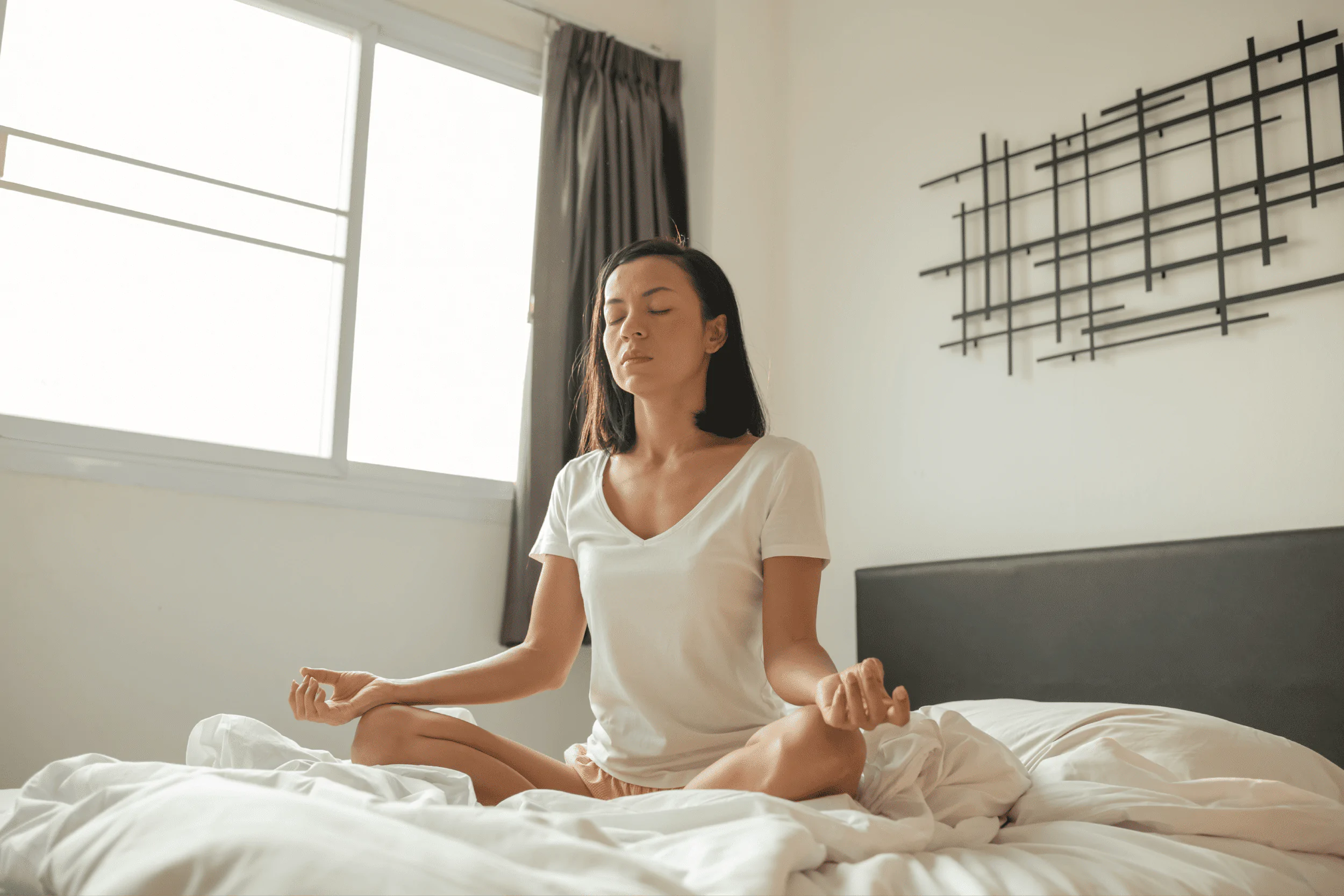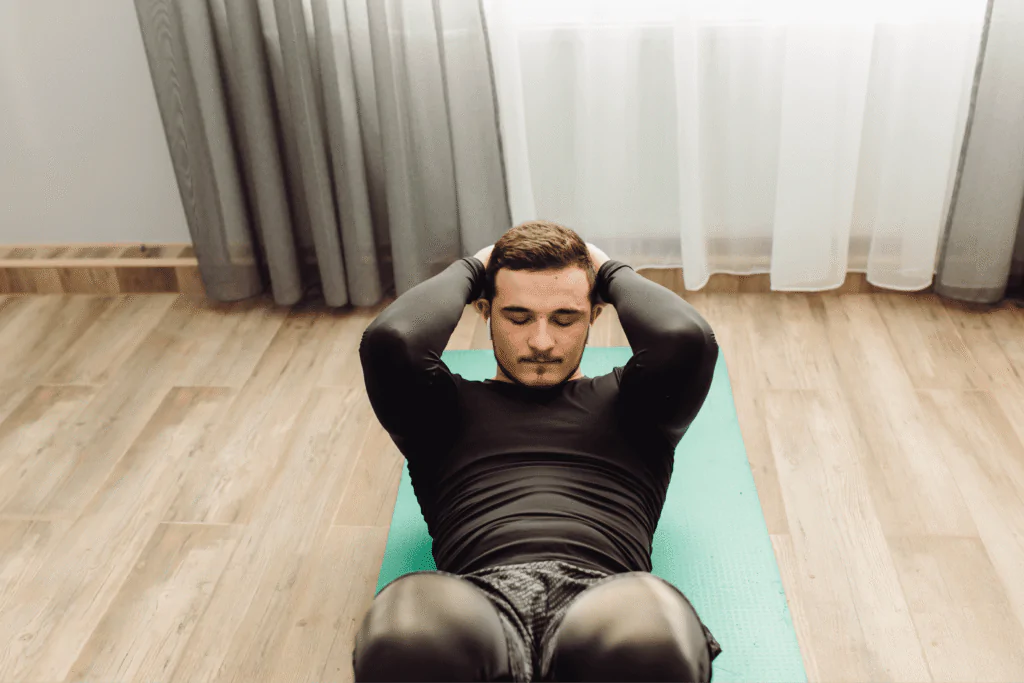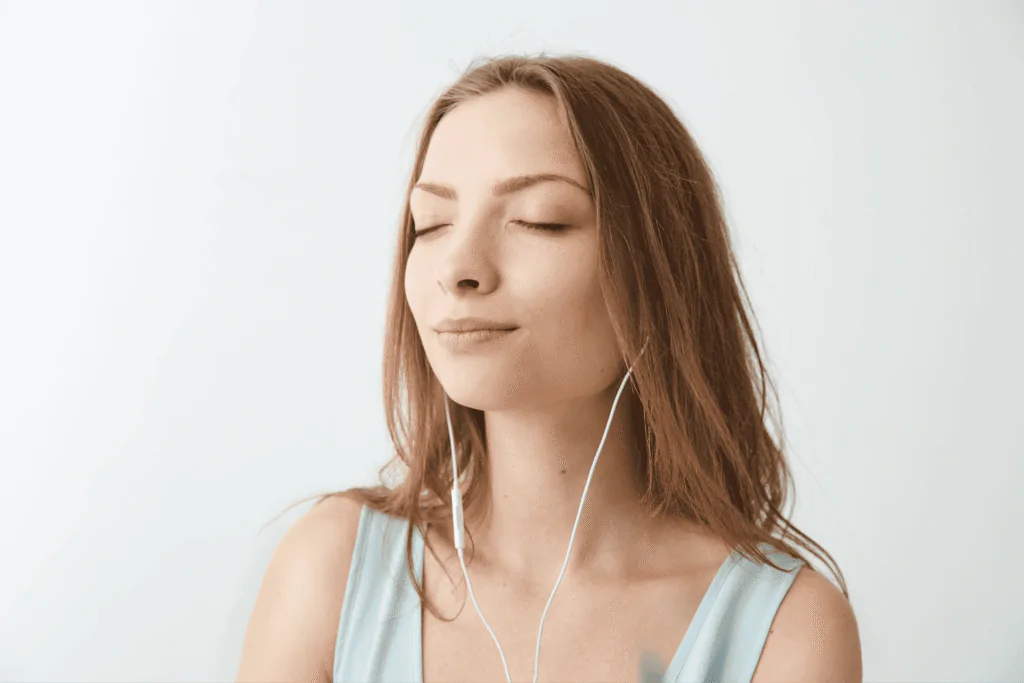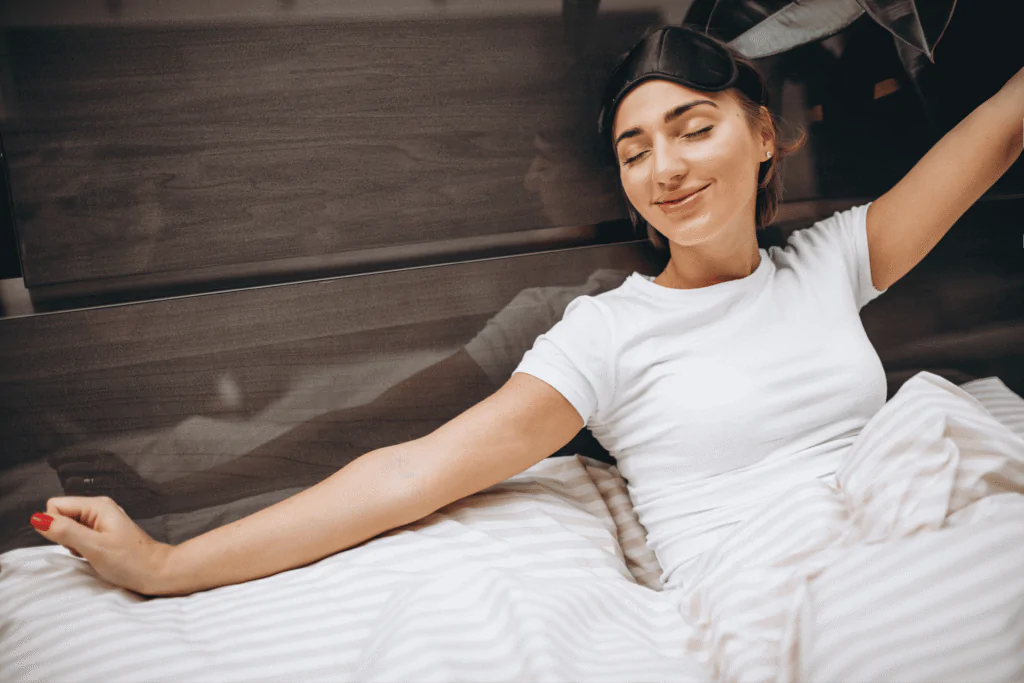If you can’t fall asleep at night, then you aren’t alone. It has been proven that meditation helps for better sleep. Research suggests that 10% to 30% of the population face issues; in meditation terms, we call it insomnia. Insomnia nowadays is a common issue in adults because adults have stress about money, housing, work, or family. Gradually, stress becomes the root of anxiety and tension, which leads to difficulty falling asleep.
When many things go on in your mind, your mind looks overfilled. Then, meditation will help you sleep peacefully, as it will quiet your mind and calm your body, allowing you to relax while going to bed.

There are many pre-bed meditation that can help you to sleep without having any medicines with a lot of side effects. Like breathing, strategies help you focus on your breaths and inner peace to relax your body and overcome overthinking.
How does meditation help for better sleep?
When you meditate while focusing on your breathing or any other kind of meditation, physiological changes start happening in your body, such as you feel calm, peaceful, and relaxed with mindfulness.
When you perform meditation before going to bed, your mind and body start to calm down. There are 3 essential meditation strategies that you can practice. These meditations allow you to focus on your body sensations and breathing to calm down your mind and relax your body. Once your body is calm, you feel stress relief, a normal heartbeat, and decreased body pressure. Bodyscanning meditation allows you to scan your body and pay attention to the points of joints in your body, where you have stress and pain. Slowly, slowly, relax your mind and body. And you end up falling asleep

We mainly discuss changes occurring in our body once we finish Probed meditations. Research from November 2016 to April 2018 showed that insomnia patients were considered and trained to meditate in the morning and before bed to observe the positive changes in the Patient reports.
In the morning, patients listen to relaxing music and take deep breaths to relax their bodies and muscles for the whole day. And they have to go through the same process before going to bed. Patients had a significant positive effect in the eighth week of the meditation training session, such as their ISI (Insomnia Severity Index) score drop-down from 20.9 to 10.4.
Three ways to meditate for better sleep:
1. Progressive Muscle Relaxation:
Gradually tense and then relax each muscle group in your body, starting from your toes and working up to your head. This helps release physical tension and promotes relaxation.

Progressive Muscle Relaxation is an advanced body scanning technique that doesn’t need any high-priced technology. You just need to have a quiet environment with mindfulness. First you need to find a quiet place where you can perform the scanning, then you need to pay attention to the muscles of your body, where you feel pressure. Starting from the feet to the head, you need to find the pressure points, then release the body muscle where you feel pressure. During this process, continue to practice slow breathing to help release stress. You can perform this practice starting for 5 minutes
A few years back, research was carried out in JAMA Internal Medicine, where 49 middle-aged and older individuals were taken into consideration as they had trouble sleeping. Half of the population of the sample went for educational classes to generate the habit of sleeping better, and half went for the mindfulness meditation techniques to sleep peacefully. The results are shocking that the mindfulness meditation group had less insomnia, fatigues, stress, and depression.
2. Breathing Meditation for better sleep:
4-7-8 Breathing technique:
Focus on your breath. Take slow, deep breaths, inhaling through your nose and exhaling through your mouth. Count to four as you inhale, hold for a count of four, and exhale for a count of four.

These are simple yet effective breathing exercises that help you calm your body and mind. This technique involves only breathing strategies, which means you can do this exercise at any time and anywhere, but before going to bed is beneficial. You can keep an eye on the seconds or count. When you inhale, you need to inhale in 4 seconds, and stop breathing for 7 seconds, then exhale the same breath in 8 seconds. What it does is enable you to focus on breathing, rather than anything else. Psychologically, this simple exercise activates your nervous system to calm down your mind and body, to have peaceful sleep.
3. Guided Visualization:
Sleep Visualization meditation for better sleep:
Picture yourself in a comfortable bed, feeling relaxed and ready for sleep. Visualize a sense of calm and drowsiness washing over you.

You are in bed, and keep changing sides? Struggles to fall asleep? Don’t worry, I have a simple technique to get you into deep sleep. You don’t need to hit the Gym, instead you can do this exercise in your cosy bed. You need to lie on your back, or if you have a problem in your back, you can lie on your side. Then start scanning your body from your feet to your head, keep breathing. Once your body becomes calm, start imagining yourself in your favorite bed, and you feel relaxed, and you don’t care about the future. This way, you shift your thoughts in your favor, and your body is already in a calm state; you end up sleeping.
Conclusion
Meditation for better sleep is a highly effective method for addressing insomnia and promoting restful sleep. You can significantly improve your sleep quality and overall well-being by incorporating bedtime meditation techniques such as progressive muscle relaxation, breathing meditation, and guided visualization. Meditation helps for better sleep by reducing stress and calming the mind and body, making it an excellent natural alternative to medications

